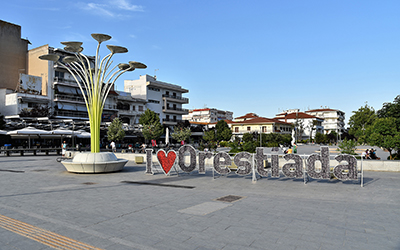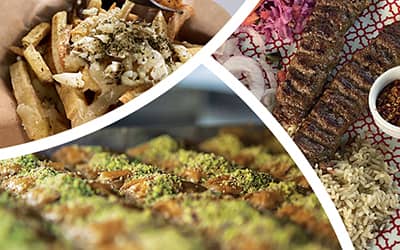
Route's points of interest
You may also like
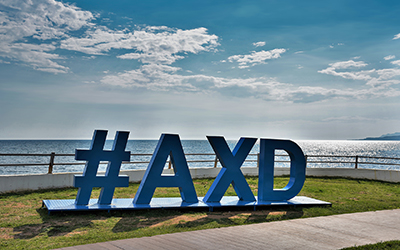
Alexandroupolis
Capital of the prefecture of Evros and main junction of the European Union with development levers such as the Egnatia Highway, the airport, the port and the railway station. With a population of 57,812 inhabitants, it unites Europe and Asia, West and East. Must-see attractions are the Lighthouse, the Evros Delta, the Cyclops Polyphemus cave, Ancient Doriskos, the Ancient Makri olive grove, the Via Egnatia, the Roman baths of Traianoupolis, the ancient city of Zone and the Panagia Cosmosoteira Monastery. The city's museums include the Natural History Museum, the Ethnological Museum of Thrace, the Archaeological Museum, the Historical Museum, the Ecclesiastical Museum, the Folklore Museum of the Cappadocian Community of Evros, the Museum of Sarakatsani Tradition. The city also has a garden theater at the Altinalmazi Ecopark, which hosts cultural events. There are also many historical and listed buildings such as Zarifios Pedagogical Academy, the old Kapnomagazo (tobacco store), which hosts the Municipal Library, the Old Hospital of Alexandroupolis (nowadays a Music School), the historical building of the National Bank of Greece, which hosts the Reading Room of the Democritus University of Thrace, the Warehouses of the port, the 1st and 3rd Primary Schools, etc. There are two hospitals, a University Hospital and a Military Hospital. Municipality of Alexandroupolis (video)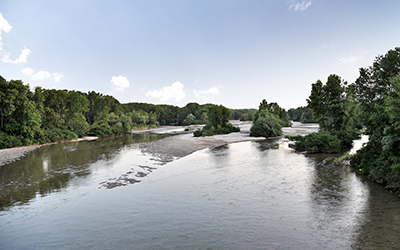
Ardas
The Arda is a tributary of Evros river - the largest one. Its springs are located up the mountains of the Rhodope Mountains in Bulgaria, and most of it crosses the neighboring country. It flows eastward and enters the Greek territory from the northern part of Orestiada. Αfter bathing at the spot where the rivers Ardas, Evros and Tonsus meet, Orestes is said to have been cleansed of the crime of matricide, for which he had been pursued by the Furies. With dense forests of alders, willows, poplars, hornbeams, field elms, plane trees, and various other species of plants growing along its banks, the Arda is proved to be an important habitat of the area with rich flora. The fauna of Arda is particularly impressive, with various species (predators, smaller birds, reptiles, mammals, and fish) finding shelter on its banks and in its waters. Over the years, large land improvement and irrigation projects have been constructed to supply the surrounding areas with water and avoid flooding. Ardas Festival takes place in the area every year. naturagraeca Municipality of Orestiada
Dadia
Dadia is a settlement on the slope of Gibrena peak. It is located inside the magnificent National Park of Dadia-Lefkimmi-Soufli Forest. During the Ottoman period, the village was called Tsiam-Kebir or Tsamkioi, meaning "pine tree" in Turkish, due to the existence of many pine trees in the area. Dadia was named after the Greek word δαδί (dadi), meaning the resin-filled wood that comes from the pine tree employed as a means of lighting and kindling. According to folk tradition, the residents of Dadia settled here to avoid an epidemic in their homeland, a city located on a hill, on the bank of the Evros, the ruins of which can still be traced at the point where the river meets the Maggazi stream.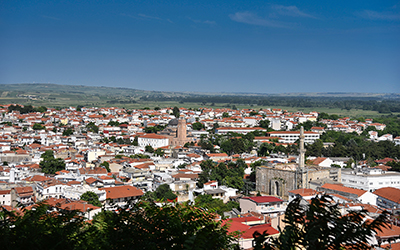
Didymoteicho
City in the region of Evros, 2 km away from the Greek-Turkish border. It was named after the double walls of its castle (Kale) or, according to another version, after the two opposite fortified cities (one on Kale and the other one on the opposite hill, Agia Petra). The city is built at the point where the rivers Evros and Erythropotamos meet, 40 km away from the Bulgarian border, and it hosts the headquarters of the Diocese of Didymoteicho, Orestiada and Soufli as well as the Muftia of Didymoteicho. The history of the city dates to the Neolithic period. It used to be the administrative and military base of the Byzantine Empire and became its capital three times. Later on, it became the first Ottoman capital in European territory. Didymoteicho was officially united with Greece by the Treaty of Sevres in 1920. Today, most of the Muslim minority belong to the Roma community. After the Greco-Turkish War (1919–1922), refugees from the Asia Minor, Eastern Thrace and Eastern Romilia settled here. There is also an Armenian community in the city. Didymoteicho has several important sights, indicative of the long history of the city. Plotinoupolis, the ancient city on the hill of Agia Petra, with impressive findings such as the Golden Bust of the emperor Septimius Severus and a Roman mosaic with mythological representations. Due to the key geostrategic position of the city, it was one of the most important cities in Thrace. It was also the birthplace of Ioannis III Vatatzis and Ioannis V Palaiologos, as well as the headquarters of the emperors Ioannis III Palaiologos and Ioannis VI Kantakouzinos. The Armenian church Surp Kevork (Agios Georgios), the Agora Gate (central castle gate), the Princess Tower, Agia Aikaterini church, the burial chapel of the Palaiologos era, the church of Christ the Savior in the Castle of Agios Athanasios, the church of the Assumption of Virgin, and several springs are some of the most interesting attractions in the city. Attractions indicative of the Ottoman history of the city include the Sandrivan or Charsi Mosque (Agora Mosque) currently the only operating mosque in Didymoteicho, the magnificent Bayazit Mosque in the central square of Didymoteicho, the Hammams of Urtz Pasha (Baths of the Whispers or Baths of Love), the Hammam Feridun Ahmed Beg and Pyrostia (Mausoleum of Oruts Pasha (turbes). The city has two remarkable museums, the Byzantine and the Folklore Museum, as well as two natural caves, the Kayali cave and the Vouva cave. Among the events that take place in the city are the bagpipe festival (Kale Panair), the “Vatatzeia”, and the “Palaiologia”. Didymoteicho is the birthplace of Byzantine emperors John III Doukas Vatatzes and John V Palaiologos, the Ottoman sultan Bayezid II, and Olympic javelin thrower Konstadinos Gatsioudis. Municipality of Didymoteicho Traditional woman's costume from Didymoteicho (photo)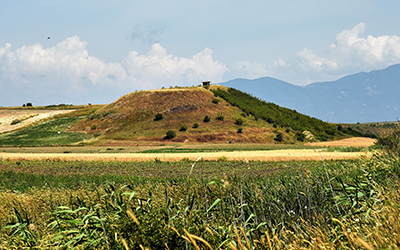
National Park of Eastern Macedonia and Thrace
The National Park of Eastern Macedonia and Thrace is a wetland complex that extends to about 930,000 acres. It consists of Nestos Delta as well as Vistonida and Ismarida lagoons. The national park was founded in 2008, with the view of protecting the rich flora and fauna of the area. There are two information centers for the national park: the Information Center of Lake Vistonida, at the western entrance of Porto Lagos, as well as the Information Center of the Nestos Delta, in Keramoti of the Regional Unit of Kavala. National Park of Eastern Macedonia and Thrace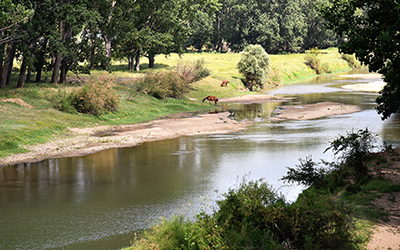
Erythropotamos
Erythropotamos is one of the main tributaries of the Evros river. Its sources are located on the Rodopi range, and more specifically on the peaks Korfovouni and Mati located in the regional units of Evros and Rodopi respectively. In antiquity, it was known as Erigonas, while in Bulgarian, it is called Luna Reka, which means 'the crazy river'. Since 2008, the Municipality of Didymoteicho holds a cultural festival called "Red River Cultural Festival".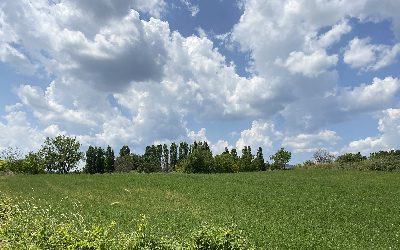
Lefkimmi
Settlement near the protected forest of Dadia, in the middle of the Evros regional unit. It was named after the numerous lefkes (meaning poplars). The village has a privileged position next to the forest and near the Evros river. Important attractions of the settlement are the church of Mary and the half-ruined mansion of Kirmizis with its traditional architecture.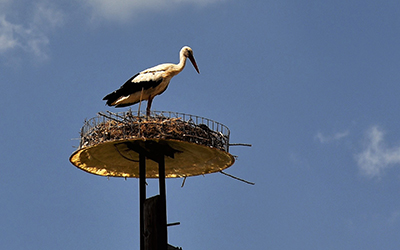
White stork
The white stork (lat. Ciconia ciconia ciconia) is a long-distance migratory bird. It lives near human settlements, in areas with wetlands, flooded rice fields, meadows, and extensive farmlands. It avoids cold and wet areas with low temperatures, as well as areas with dense vegetation. The white stork feeds mainly on insects, reptiles, amphibians, and small mammals, as well as on eggs or bird chicks. The presence of the white stork in Greece has been witnessed since antiquity. As a matter of fact, the scientific name of the species Ciconia is the translational equivalent of the Greek word πελαργός (=stork) denoting the ancient Thracian tribe of Cicones. This Homeric tribe was believed to inhabit the south coast of Thrace extending from the delta of river Evros to Lake Vistonida. The same area used to be the habitat of white storks which were highly respected by Cicones. Today, the white stork is a species that is threatened by extinction mainly due to the degradation of its habitat and environmental conditions. Moreover, electrocution and collision with power lines are also referred to as major causes of white stork mortality. Species sounds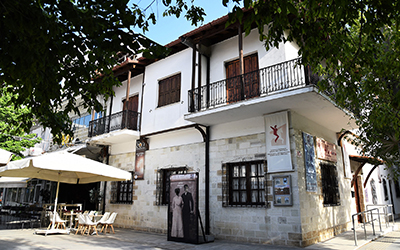
Folklore and History of Art Museum of Orestiada and region
The folklore of Thrace in one museum The museum exhibits traditional costumes, household and church utensils, musical instruments and agricultural tools from Thrace as well as the urban Thracian room. The historical and folklore material covers the period 1800-1950. Geographically it covers the regions of Eastern Thrace, Eastern Rumelia and Western Thrace. Through its permanent collection, periodic exhibitions and events, the museum aims not only to present the traditions, but also the rich history of the area. Access for the disabled on the museum premises is partial. Ministry of Culture JTI Target (video)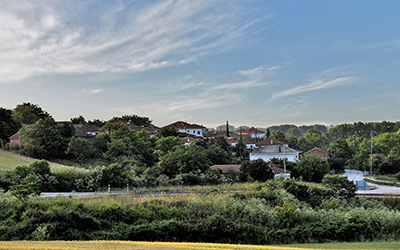
Ormenio
Ormenio is a village in the Evros region, and the northernmost settlement in Greece. It is situated near the right bank of the river Evros, and it is the stop where the river enters Greece from Bulgaria. It was an important town of the Byzantine Empire, as evidenced by the remains of the medieval fortress. In September 1371, Ormenio and the nearby banks of Evros were the sites of the Battlle of Martisa (or Battle of Evros) between the allied Christian forces of the Balkan nations (Serbs, Bulgarians, and Greeks) and the Ottoman Empire. The former tried unsuccessfully to prevent the advance of the Ottomans in the Balkans. These efforts ended in a defeat that seriously affected the future of the Byzantine Empire. The Byzantine general Belisarius was born in Ormenio. Britannica ERT news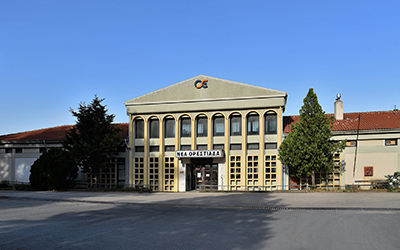
Orestiada railway station
The Orestiada Railway Station is located on the eastern border of the settlement of the same name. It belongs to the local line of the port of Alexandroupolis-Dikaia. It is located between Heimoni and Sakkos stations. The station building, like the rest of the Alexandroupolis-Dikaia railway network, is made of glass-brick construction and covered with wooden cladding.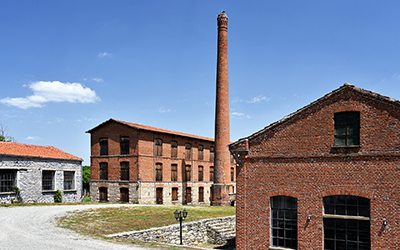
Sericulture
Soufli is the city of silk. The silkworm breeding started from Edirne and continued around Evros river and the area of Soufli, whose inhabitants began to deal with silk as producers, workers and traders. In the early 1880s the city became an important sericulture center. Every year, from May to June, the city pulsated to the rhythms of silk and silkworm rearing. Most part of the house of most inhabitants of the city was shaped based on the needs of sericulture. Nowadays, the silk produced in Soufli is of high quality. Visit Thraki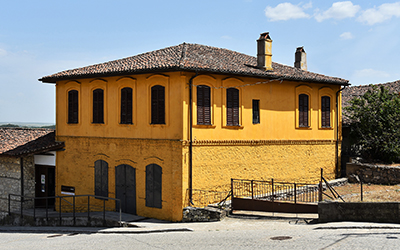
Soufli
Soufli is the “City of Silk” and is built 500 meters from the Evros. It was named after the tradition of the wise hermit Sofoulou (Sofou means "hermit" and Sofoulou means "hermitage"), who was alone in the area. According to another version, Soufli was named after groups of people from Souli, who left their land and settled in the area. The city is famous for its silk, and has many silk factories. In its museums, you can see the history of the city as well as the history of the silk. The houses, known as koukoulospita, are traditionally made of wood and stone and they are built to serve the needs of sericulture. Municipality of Soufli (video)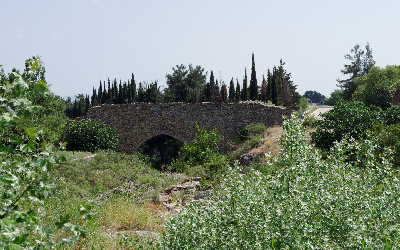
Feres
City of Evros, next to the monastery of Virgin of Kosmosoteira. The city has a folklore collection of objects of the inhabitants who were refugees from Eastern Thrace. It is the starting point for the excursions of the visitors in Delta of Evros. Outside the city you can still see the Byzantine Aqueduct with its great fountain.
